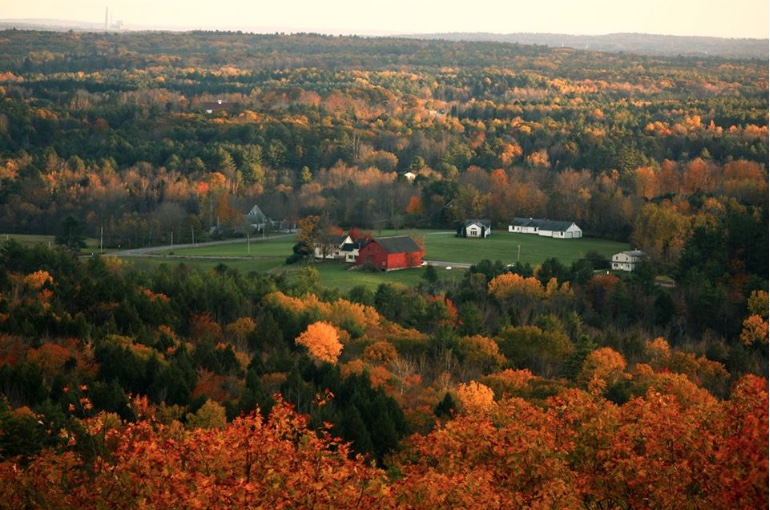
Pownal, Maine, in fall looking southeast from Bradbury Mountain. My westward walk to school took me over the hill behind the long white house that wasn’t there then. Photo by Green Deane
In the olden BC days… before computers… Labor Day meant you went back to school the next day. School also let out sometime in June. Your release date was never exact because several “snow days” were built into the calendar every year. If they weren’t used up we got out in early June. If it was a bad winter then we got out mid-June. We also were not too far removed from harvest time on both ends of the school year.
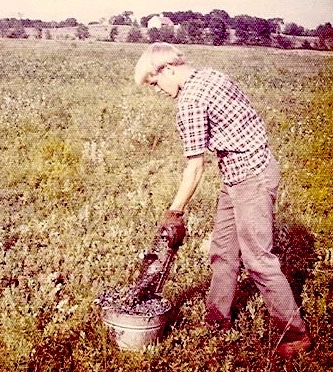
Harold Grandholm, a high school classmate, raking blueberries during “summer vacation.”
I walked to school daily, five miles round trip, and that was my preference. The wander took me past blueberry fields, Concord grape hedgerows, apple orchards and a great view of New Hampshire’s Mt. Washington some 60 miles away. I was scrumping every morning and afternoon for six weeks or so. This daily Too & Fro also included crossing the Royal River which was really more of a serf stream except during the spring floods. (Fished and fell into the Royal a lot. Found my first black pearl there and caught my first eel there.) All that wild fall fruit always ruined my supper but then again my mother was a horrible cook so it worked out well. In September and October you also sized up last year’s now dry wood. We had two wood stoves. And once there was snow that meant “pulping” which is cutting next year’s firewood so it can “season” for a year. Plants were also part of school letting out in spring. I noticed way back in sixth grade that when the (edible) Lilacs blossomed school was nearly out for the summer… and summer vacations were wrongly named: For most kids where I grew up it meant farm work until school started in September. For me it was three full months of working in the hay fields, a hot, dusty, wasp-punctuated job. My mother collected horses (and other farm animals) and they had to be fed so into the fields I went, indentured labor. There was also summer gardening, 70 days of it. I only escaped all that by volunteering for the Army in 1969 when Vietnam was hot… young men can make stupid decisions… but I never hayed again.
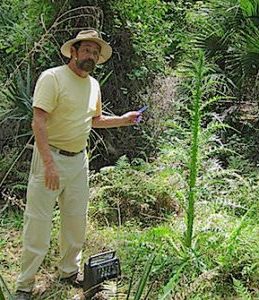
Foraging classes are held rain, shine, hot or cold. Photo by Nermina Krenata
Foraging classes this weekend are in and out of town. In town Saturday is a foraging class at Blanchard Park. It’s a nice location and allows me to make the 2 p.m. mushroom hunt west of Lake Mary (See below.) Sunday’s class is long the Peace River in Port Charlotte, always a pleasant location with salt-tolerant plants. Plenty of room in both classes.
Saturday, September 8th, Blanchard Park, 10501 Jay Blanchard Trail, Orlando, FL 32817. 9 a.m. Meet at the pavilion east of the tennis courts near the YMCA.
Note: The afternoon of Sept. 8th there is a Mushroom Class just west of Sanford Fl. For more information go to the Orlando Mushroom Group on Facebook or see below.
Sunday, September 9th, Bayshore Live Oak Park, Bayshore Drive. Port Charlotte. Meet at the parking lot at the intersection of Bayshore Road and Ganyard Street. 9 a.m
Saturday, September 15th, Colby-Alderman Park: 1099 Massachusetts Street, Cassadaga. Fla. 32706. 9 a.m.
Sunday, September 16th, Eagle Park Lake, 1800 Keene Road, Largo, FL33771. 9 a.m. Meet at the pavilion near the dog park.
Sunday, September 23rd, Dreher Park, 1200 Southern Blvd., West Palm Beach, 33405. 9 a.m. Meet just north of the science center.
For more information or to pay for a class go here.
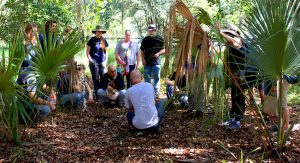
OMG! The Orlando Mushroom Group in the field collecting mushrooms. Photo by Green Deane
As you can see in the schedule above the Orlando Mushroom Group (OMG) will be holding its first fall mushroom hunt this Saturday, Sept 8th. The foray is led by Joshua Buchanna. I will be there as a beast of burden, go for, bottle washer, compass carrier et cetera… Cost is $10 per adult. The class is about three hours long give or take a thunderstorm or two. OMG is a local group I started and is one of several mushroom pages I created on Facebook. We own the domain Orlando Mushroom Group so if you are good at volunteering your skills at creating websites we’d like to hear from you. The others pages I started are Florida Mushroom Identification Forum, Southeastern U.S. Mushroom Identification, Edible Mushrooms Florida, and Edible Wild Mushrooms. In total they have over 7,000 members and many published experts. Little ol’ OMG has some 300 members. I have not populated Edible Wild Mushrooms (there are only so many hours in a day…) Saturday’s location provides a wide array for mushrooms from edible to toxic. We walk mostly on mountain bike trails, woods roads, or in open grassy woodland. You can sign up on the OMG page or let me know.
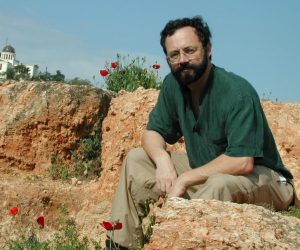
The Nine DVD set includes 135 videos.
All of Green Deane’s videosavailable for free on You Tube. They do have ads on them so every time you watch a Green Deane video I get a quarter of one cent. Four views, one cent. Not exactly a large money-maker but it helps pays for this newsletter. If you want to see the videos without ads and some in slightly better quality you can order the DVD set. It is nine DVDs with 15 videos on each for a total of 135 videos. Many people want their own copy of the videos or they have a slow service and its easier to order then to watch them on-line. The DVDs make a good gift for that forager you know especially on long, cold winter months. Individual DVDs can also be ordered or you can pick and choose. You can order them by clicking on the button on the top right hand side of this page (if your window is open wide enough.) Or you can go here.
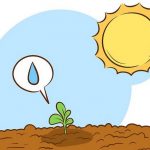 Donations to upgrade EatTheWeeds.com and fund a book have gone well and made it past the half way mark. Thank you to all who have contributed to either via the Go Fund Me link, the PayPal donation link or by writing to Green Deane POB 941793 Maitland FL, 32794. The goal now is to expand the forum page and the means to display more foraging teachers. And a special thanks to Thomas Sorrentino for your recent donations.
Donations to upgrade EatTheWeeds.com and fund a book have gone well and made it past the half way mark. Thank you to all who have contributed to either via the Go Fund Me link, the PayPal donation link or by writing to Green Deane POB 941793 Maitland FL, 32794. The goal now is to expand the forum page and the means to display more foraging teachers. And a special thanks to Thomas Sorrentino for your recent donations.

Green Deane Forum
Want to identify a plant? Need to identify a plant? Looking for a foraging reference? Maybe you have a UFO, an Unidentified Flowering Object, you want identified. On the Green Deane Forum we — including Green Deane — chat about foraging all year. And it’s not just about warm-weather plants or just North American flora. Many nations share common weeds so there’s a lot to talk about. There’s also more than weeds. The reference section has information for foraging around the world. There are articles on food preservation, and forgotten skills from making bows to fermenting food. Topics have included: Tea, Salt and Amla, Small Bush and Flower, Ragweed? Pine Cough Drops and Needles, Odd Vine? Hunting and Trapping Ethics. Knife Accidents. Some Kind of Lespendeza and Survival Garden. You can join the forum by clicking on the button in the menu line.
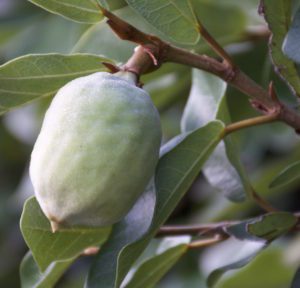
Turn inside out, scrape the seeds. Photo by Green Deane
Many years ago I was coaxed into getting a beer at a small eatery in Tampa’s Ybor City. The beer was not memorable but the brick wall on one side of the outdoor patio was. It had a vine I had never noticed. It took awhile but I identified it as a Creeping Fig (and many other names.) It is also something of a chameleon: The young vine on first glance does not look much like the old vine so one can indeed find it and not know you have found it. Also given the right support — such as a strong fence — the vine can cover the entire fence to the extent the vine looks like a long line of shrubs. But then it produces green fig-like fruit. Only the sap of them makes it barely into the edible realm. To read more about the Creeping Fig go here.
This is weekly issue 320.
If you would like to donate to Eat The Weeds please click here. Or you can use my Go Fund Me link, or by writing to Green Deane POB 941793 Maitland FL, 32794


There stories of your childhood are delightful to read. Green is a better name than Hayseed.
On your last plant walk at Eagle Lake Park in Largo, you found some bacopa along a pond edge. You related an interesting study about the cognitive benefits of bacopa, which intrigued me. I took a small sprig home and now I have a growing and thriving mat of it in my aquaponic system.